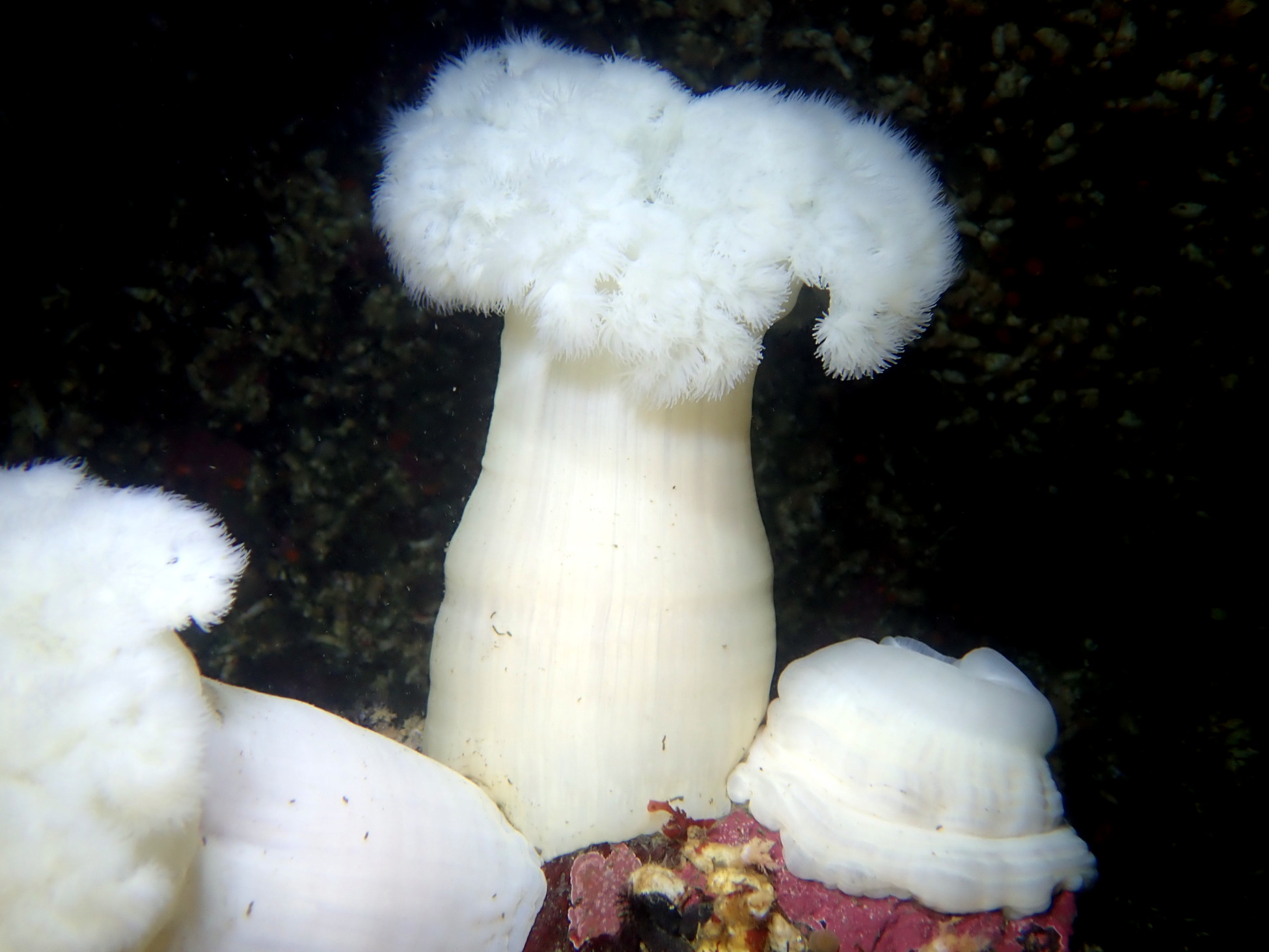Sea anemones are soft-bodied, underwater predators known for their bright colors, flowerlike arrangement of tentacles and the tendency to eat just about anything they can catch and fit into their mouths. In line with this last trait, researchers examining the gut contents of the giant plumose anemone, Metridium farcimen, have added a surprising food item to its menu: ants.
The study marks the first time DNA sequencing has been used to analyze the diet of sea anemones. By extracting genetic material from a slushy mix of partially digested food, the researchers were able to work backward, comparing their results to DNA from organisms across the tree of life stored in online repositories.
In the past, the most common way to determine what marine animals ate in the wild was to preserve and dissect them, then peer at the remnants of their last meal. This method was laborious and unreliable, given that many of the identifying features of plants and prey had been etched away by digestive juices.
Knowing what an animal eats, however, is indispensable when trying to understand how marine communities function. And on the rocky western coast of North America, from the glaciated bays of Alaska down to the warm waters of the Baja Peninsula and Central Mexico, this is especially true of anemones.
“Anemones are one of the most abundant animals in these ecosystems, and they impact the food webs around them,” said Gustav Paulay, curator of invertebrate zoology at the Florida Museum of Natural History and author of the study.
Related to corals and jellyfish, anemones often live in dense communities of organisms, where they teeter above their competition on pendulous stalks anchored to rocky outcrops or coral reefs. Unlike their jellyfish cousins, anemones remain perched in one place for most of their lives, where they lie in wait for food to stray across their path. With concentric rings of sticky tentacles sheathed in a fine mesh of poisoned darts, they harpoon and reel in worms, snails and even fish.
“These anemones are the upper story, with hundreds of species below them,” Paulay said. “They influence how water flows around them and how it reaches the lower tiers where smaller things live.”
Sea anemones, such as these giant plumose anemones in the Sechelt Inlet of British Colombia, have stalks anchored to rocks or corals that support an antenna of branching tentacles.
Photo courtesy of Neil McDaniel. Used with permission.
While some of the larger species consume fish, crabs and jellyfish, others, such as the giant plumose anemone in this study, subsist on plankton, a catch-all term for just about any small organism that gets swept along with ocean currents. Oceans teem with microscopic plankton, many of them small crustaceans – krill, copepods and the developing larvae of crabs, barnacles and shrimp.
“When a plankton community floats overtop a bed of anemones, the plankton is filtered by millions of grasping tentacles,” said Christopher Wells, a postdoctoral associate at the University at Buffalo and lead author on the study. “This can drastically change the composition of the plankton community, which is food for many economically important animals such as bivalves and fish.”

Photo by Wells et al. in Environmental DNA, CC BY-NC-ND 4.0
Organisms that live on land, however, are conspicuously absent from this diverse, underwater ecosystem.
So it came as a surprise to the researchers when their results revealed that 10% of the food being eaten by giant plumose anemones consisted of ants, specifically the pale-legged field ant, Lasius pallitarsis, common along the shores of the Pacific Northwest.
By digging into the natural history of this species, the researchers came up with a plausible explanation for how these ants became part of the marine food chain.
“Pale-legged field ants spend most of their time underground, working on improving their colony,” Wells said.
But in late summer, cued by warm temperatures and fair weather, queens and male drones from several different colonies, equipped with wings, take to the skies and congregate in dense swarms to mate.
“Unfortunately, they aren’t strong fliers,” Wells said. “Winds can move them far off course, sometimes into the ocean. Since they aren’t good swimmers, they end up drowning and getting eaten, sometimes by anemones.”
The team’s results indicate that giant plumose anemones also eat the occasional hapless spider, along with a few insects in addition to ants that wander too close to the water’s edge and drown.
The study was first conceived during a marine biodiversity methods course taught at Friday Harbor Laboratories by Paulay and study co-author Matthieu Leray, a postdoctoral researcher at the Smithsonian Tropical Research Institute, and is part of a larger effort by scientists who are using DNA sequencing to document the array of microscopic organisms that live in ocean environments.
While the researchers were able to identify many of the species preyed on by the giant plumose anemone, Paulay noted they were unable to match a substantial portion of DNA sequences with any known organisms, underscoring how much is left to be discovered in the oceans’ depths.
“This whole approach is incredibly powerful, but it hinges on knowing what the DNA sequences go with. In the marine world, we’re really behind on this.”
The researchers published their findings in Environmental DNA.
Bryan Nguyen of George Washington University also co-authored the study.
Funding for the research was provided by the Robert T. Paine Experimental and Field Ecology Award Fellowship, the Friday Harbor Laboratories Research Fellowship Endowment, the Patricia L. Dudley Endowment for Friday Harbor Laboratories, the Richard and Megumi Strathmann Fellowship, the Kenneth P. Sebens Endowed Student Support Fund and the Friday Harbor Laboratories Marine Science Fund.
Photo of Metridium farcimen colony by Neil McDaniel.
You can read more about the study on the University at Buffalo’s website.
Sources: Gustav Paulay, paulay@flmnh.ufl.edu;
Christopher Wells, christopher.wells.23@gmail.com
Writer: Jerald Pinson, jpinson@flmnh.ufl.edu, 352-294-0452